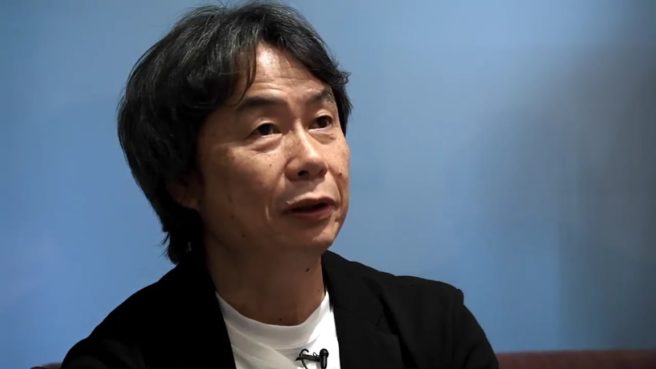Kimishima, Miyamoto and Takeda on Nintendo’s development structure, expanding the company, more
At the Q&A session at Nintendo’s latest Corporate Management Policy Briefing, one of the questions was about Nintendo’s internal development structure, the development team that handles the smart device games and Nintendo’s hiring process. The question was answered by company president Tatsumi Kimishima, Shigeru Miyamoto (Director, Creative Fellow) and Genyo Takeda (Director, Technology Fellow).
Q: I would like to hear more about the current and future direction of your development structure, which is widely considered to be your greatest competitive strength. Do you plan to maintain the current scale for the mid- to long-term, or will you expand it? How will you expand the smart-device team within the larger development structure? My assumption is that there are currently fewer than 100 people on this team, do you think that is sufficient? Also, what sort of employees are needed to help Nintendo grow and evolve in the future, and how do you plan to develop these employees?
A: Kimishima:
Our overall development staff has increased over the past year, but that does not mean it will necessarily continue to increase. In the entertainment industry, it is very common to take the approach of hiring employees who already have experience and technical knowledge in needed areas, in addition to developing new technology and ideas within the company. Going forward, we would like to increase the number of employees who already have some technical ability and who have fun ideas that can inspire new game experiences. These are the kind of people we see as necessary in our field of development. For smart devices, we have been developing using one of our most important IPs, Mario, so instead of using a team that had no prior experience with Mario, we had developers who worked on past Mario games join the development of Super Mario Run. The scale of the team we currently have working on apps is not as large as you
surmise. In the future, while we will plan the course of development, we may not necessarily allocate exclusively internal development resources. We would like to continue cooperating with external partners who understand Nintendo well when the situation calls for it.
Head past the break for Miyamoto’s and Takeda’s take on the subject:
Miyamoto:
Software and service sales are becoming increasingly crucial to overall sales, and this encourages greater expenditures on personnel. However, if we were to attempt to take everything on ourselves, we would have to increase our staff dramatically, and that would mean that we could not nurture those resources sufficiently. This is one of our greatest challenges. That is why we are working on development with a number of external partners. Employees in their 30s are the main part of the next generation, and as more of these employees become able to take on management roles, we will be able to strengthen our development talent. However, we constantly face the dilemma that simply hiring new people may increase the number of people who don?t have a deep understanding of Nintendo?s DNA. I have shared with Mr. Takahashi that although it takes four times as many people to create the products now, if we simply hire four times as many people we won?t have sufficient opportunities to nurture them. We are considering a number of approaches to this challenge, so please look forward to more information in the future.
Takeda:
Nintendo is not directly involved in developing the basic technology, but technical innovation is important in the entertainment industry. Until recently, it was sufficient to have expertise in computer science fields such as semiconductors, but we have needed to expand our knowledge in a greater variety of fields over the last few years. Therefore, our appraisal ability has become ever-more important, and we believe that we need to focus on our ability to adopt a certain technology and transform it to suit our purposes. While we continue to focus on this ability, we feel it is also important to pursue outsourcing opportunities with universities and external partners, so we don?t think that a sudden increase in staffing is the only solution.
